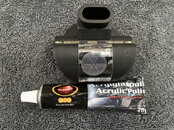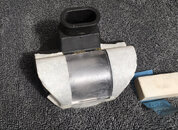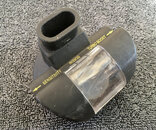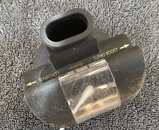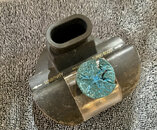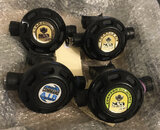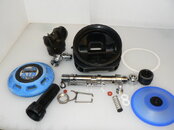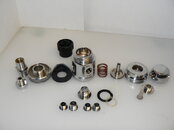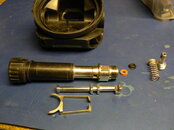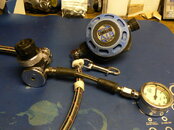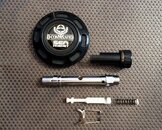Another batch of Command Air regulators saved from land fill... pretty much every LDS here will now claim they cannot be serviced when the truth is any decent tech can replace the standard AS568 o-rings they use, clean adjust and get them back in action.
The HP seats can be refaced easily, and the iconic clear window often gets scratched up but can be refinished by masking off and careful wet sanding with progressively finer grades of wet and dry paper (finish with 2000 grit) used with an eraser backing and soapy water.
I've found the finer grade Autosol Acrylic polish to be excellent when used after a first pass with regular Austosol... pretty much optically clear, and works on HP gauge faces too.
Although the clear window is clipped in, the legs are now very fragile and usually one will snap off if you try to remove it.
One early blue label reg had the original latex rubber exhaust valve (for faster 'snap back') which deteriorated rapidly in service, hence the clear viewing window to monitor condition.
Best to remove the residual goo from the valve seat area with a Q-Tip and orange oil label remover.
On later production they were changed to silicone rubber, but the window was retained.
One tip, the notch in the chromed 'LP valve piston' can be fiddly to line up with the square air tube holes when replacing the demand lever, if you screw in the LP seat to its stop that will hold the piston at pretty much the right spot when engaging the legs of the demand lever. Back it off a few turns afterwards before installing the diaphragm.
Second tip... if the face cover is stuck in place use the rubber coated ends of a suitably sized pair of pliers reversed into the slots... easy!
MK 1 DIN has the 3 pin style adjustable IP, this satin finish one was in excellent condition.. apart from crispy original rubber hoses!
IP stable at specified 10 BAR.
One very rare Command Air Nitrox as a bonus...




